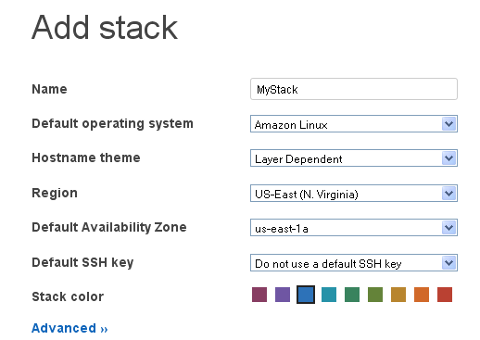 In a bid to maintain its lead within the increasingly competitive cloud-storage market, Amazon has slashed prices for its S3 standard storage and Reduced Redundancy Storage (RRS) customers. For S3 customers in the U.S. Standard region, those prices will dive 22 percent; EMB Standard volume prices are up to 50 percent lower for both storage and I/O requests. In addition, Amazon has rolled out two new sizes for M3 instances (m3.medium and m3.large). “We have also added SSD-based instance storage and support for instance store-backed AMIs (previously known as S3-backed AMIs) for all M3 instance sizes,” read a note on the official AWS Blog. “M3 instances feature high frequency Intel Xeon E5-2670 (Sandy Bridge or Ivy Bridge) processors.” The new instances are available in all regions, and can be launched as On-Demand, Reserved, or Spot instance. Amazon adds new capabilities and pricing structures to AWS on a regular basis, and so far that’s been enough for the company to stay ahead of other competitors in the cloud storage-and-services space. However, strong rivals are on the rise—the Google Compute Engine, the search engine giant’s Infrastructure-as-a-Service (IaaS) offering, recently hit its general availability milestone; and a variety of tech giants—including IBM, Dell, Hewlett-Packard, Oracle, and Red Hat—have signed onto the OpenStack open-source IaaS platform, figuring that an alliance on a single standard is a good way to push back against Amazon’s influence in the space. In order to increase that influence (and compete with regional rival Alibaba), Amazon recently announced plans to open an AWS region in China. Amazon will kick off a limited preview before expanding service to a “select group” (in the company’s words) of Chinese and multinational companies early next year. Services available in the region will include Elastic Compute Cloud (EC2), Simple Storage Service (S3), DynamoDB, Glacier, and Simple Workflow (SWF), among others. On top of that, Amazon will surely add more AWS features (and perhaps slash prices) as the year progresses; but it’s also clear that the company faces more competition than ever. Image: rvlsoft/Shutterstock.com
In a bid to maintain its lead within the increasingly competitive cloud-storage market, Amazon has slashed prices for its S3 standard storage and Reduced Redundancy Storage (RRS) customers. For S3 customers in the U.S. Standard region, those prices will dive 22 percent; EMB Standard volume prices are up to 50 percent lower for both storage and I/O requests. In addition, Amazon has rolled out two new sizes for M3 instances (m3.medium and m3.large). “We have also added SSD-based instance storage and support for instance store-backed AMIs (previously known as S3-backed AMIs) for all M3 instance sizes,” read a note on the official AWS Blog. “M3 instances feature high frequency Intel Xeon E5-2670 (Sandy Bridge or Ivy Bridge) processors.” The new instances are available in all regions, and can be launched as On-Demand, Reserved, or Spot instance. Amazon adds new capabilities and pricing structures to AWS on a regular basis, and so far that’s been enough for the company to stay ahead of other competitors in the cloud storage-and-services space. However, strong rivals are on the rise—the Google Compute Engine, the search engine giant’s Infrastructure-as-a-Service (IaaS) offering, recently hit its general availability milestone; and a variety of tech giants—including IBM, Dell, Hewlett-Packard, Oracle, and Red Hat—have signed onto the OpenStack open-source IaaS platform, figuring that an alliance on a single standard is a good way to push back against Amazon’s influence in the space. In order to increase that influence (and compete with regional rival Alibaba), Amazon recently announced plans to open an AWS region in China. Amazon will kick off a limited preview before expanding service to a “select group” (in the company’s words) of Chinese and multinational companies early next year. Services available in the region will include Elastic Compute Cloud (EC2), Simple Storage Service (S3), DynamoDB, Glacier, and Simple Workflow (SWF), among others. On top of that, Amazon will surely add more AWS features (and perhaps slash prices) as the year progresses; but it’s also clear that the company faces more competition than ever. Image: rvlsoft/Shutterstock.com Amazon Slashes AWS Prices, Adds Instances in Competitive Bid
 In a bid to maintain its lead within the increasingly competitive cloud-storage market, Amazon has slashed prices for its S3 standard storage and Reduced Redundancy Storage (RRS) customers. For S3 customers in the U.S. Standard region, those prices will dive 22 percent; EMB Standard volume prices are up to 50 percent lower for both storage and I/O requests. In addition, Amazon has rolled out two new sizes for M3 instances (m3.medium and m3.large). “We have also added SSD-based instance storage and support for instance store-backed AMIs (previously known as S3-backed AMIs) for all M3 instance sizes,” read a note on the official AWS Blog. “M3 instances feature high frequency Intel Xeon E5-2670 (Sandy Bridge or Ivy Bridge) processors.” The new instances are available in all regions, and can be launched as On-Demand, Reserved, or Spot instance. Amazon adds new capabilities and pricing structures to AWS on a regular basis, and so far that’s been enough for the company to stay ahead of other competitors in the cloud storage-and-services space. However, strong rivals are on the rise—the Google Compute Engine, the search engine giant’s Infrastructure-as-a-Service (IaaS) offering, recently hit its general availability milestone; and a variety of tech giants—including IBM, Dell, Hewlett-Packard, Oracle, and Red Hat—have signed onto the OpenStack open-source IaaS platform, figuring that an alliance on a single standard is a good way to push back against Amazon’s influence in the space. In order to increase that influence (and compete with regional rival Alibaba), Amazon recently announced plans to open an AWS region in China. Amazon will kick off a limited preview before expanding service to a “select group” (in the company’s words) of Chinese and multinational companies early next year. Services available in the region will include Elastic Compute Cloud (EC2), Simple Storage Service (S3), DynamoDB, Glacier, and Simple Workflow (SWF), among others. On top of that, Amazon will surely add more AWS features (and perhaps slash prices) as the year progresses; but it’s also clear that the company faces more competition than ever. Image: rvlsoft/Shutterstock.com
In a bid to maintain its lead within the increasingly competitive cloud-storage market, Amazon has slashed prices for its S3 standard storage and Reduced Redundancy Storage (RRS) customers. For S3 customers in the U.S. Standard region, those prices will dive 22 percent; EMB Standard volume prices are up to 50 percent lower for both storage and I/O requests. In addition, Amazon has rolled out two new sizes for M3 instances (m3.medium and m3.large). “We have also added SSD-based instance storage and support for instance store-backed AMIs (previously known as S3-backed AMIs) for all M3 instance sizes,” read a note on the official AWS Blog. “M3 instances feature high frequency Intel Xeon E5-2670 (Sandy Bridge or Ivy Bridge) processors.” The new instances are available in all regions, and can be launched as On-Demand, Reserved, or Spot instance. Amazon adds new capabilities and pricing structures to AWS on a regular basis, and so far that’s been enough for the company to stay ahead of other competitors in the cloud storage-and-services space. However, strong rivals are on the rise—the Google Compute Engine, the search engine giant’s Infrastructure-as-a-Service (IaaS) offering, recently hit its general availability milestone; and a variety of tech giants—including IBM, Dell, Hewlett-Packard, Oracle, and Red Hat—have signed onto the OpenStack open-source IaaS platform, figuring that an alliance on a single standard is a good way to push back against Amazon’s influence in the space. In order to increase that influence (and compete with regional rival Alibaba), Amazon recently announced plans to open an AWS region in China. Amazon will kick off a limited preview before expanding service to a “select group” (in the company’s words) of Chinese and multinational companies early next year. Services available in the region will include Elastic Compute Cloud (EC2), Simple Storage Service (S3), DynamoDB, Glacier, and Simple Workflow (SWF), among others. On top of that, Amazon will surely add more AWS features (and perhaps slash prices) as the year progresses; but it’s also clear that the company faces more competition than ever. Image: rvlsoft/Shutterstock.com 